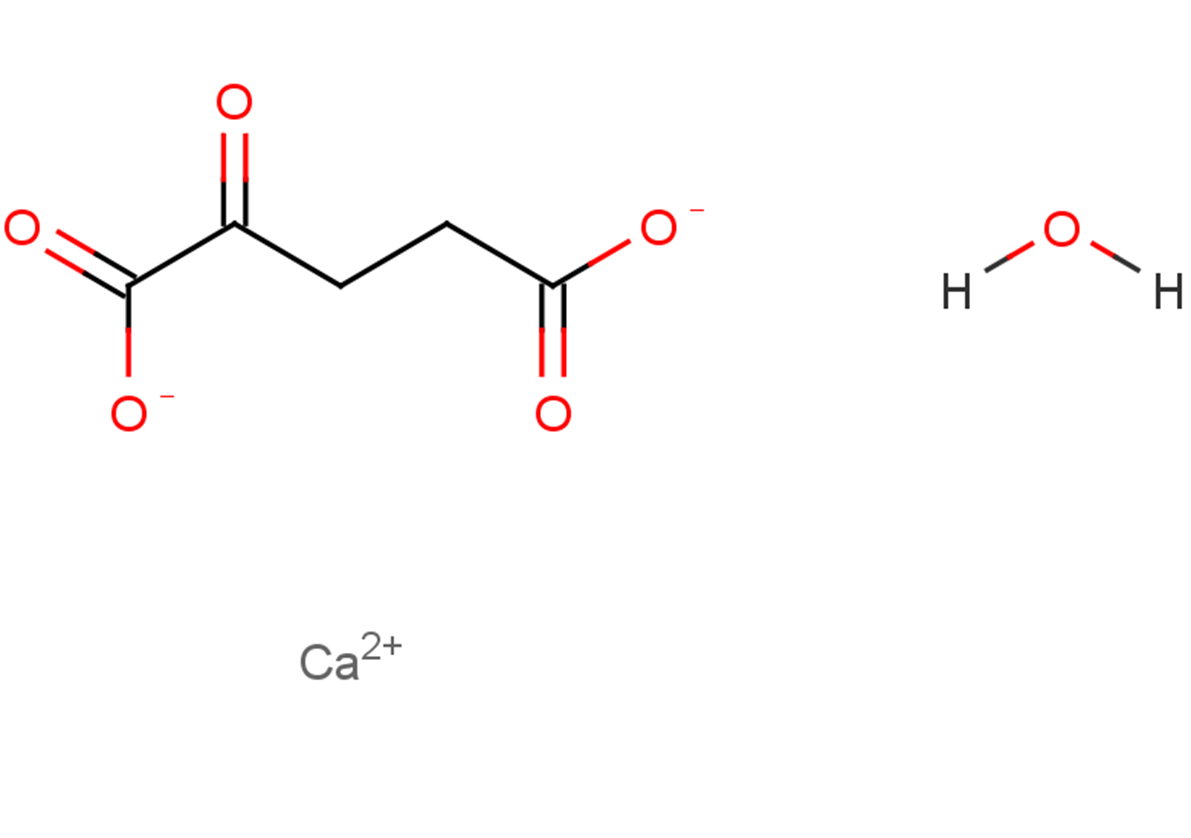
Alpha-calcium ketoglutarate monohydrate
CAS No. 402726-78-7
Alpha-calcium ketoglutarate monohydrate( —— )
Catalog No. M24363 CAS No. 402726-78-7
Alpha-calcium ketoglutarate monohydrate is the calcium salt form of Alpha-ketoglutarate, which is involved in the tricarboxylic acid cycle in organisms.
Purity : >98% (HPLC)
 COA
COA
 Datasheet
Datasheet
 HNMR
HNMR
 HPLC
HPLC
 MSDS
MSDS
 Handing Instructions
Handing Instructions
| Size | Price / USD | Stock | Quantity |
| 5MG | 45 | In Stock |


|
| 10MG | 68 | In Stock |


|
| 25MG | 115 | In Stock |


|
| 50MG | 173 | In Stock |


|
| 100MG | 258 | In Stock |


|
| 200MG | 388 | In Stock |


|
| 500MG | 642 | In Stock |


|
| 1G | Get Quote | In Stock |


|
Biological Information
-
Product NameAlpha-calcium ketoglutarate monohydrate
-
NoteResearch use only, not for human use.
-
Brief DescriptionAlpha-calcium ketoglutarate monohydrate is the calcium salt form of Alpha-ketoglutarate, which is involved in the tricarboxylic acid cycle in organisms.
-
DescriptionAlpha-calcium ketoglutarate monohydrate is the calcium salt form of Alpha-ketoglutarate, which is involved in the tricarboxylic acid cycle in organisms.
-
In Vitro——
-
In Vivo——
-
Synonyms——
-
PathwayOthers
-
TargetOther Targets
-
RecptorOthers
-
Research Area——
-
Indication——
Chemical Information
-
CAS Number402726-78-7
-
Formula Weight202.18
-
Molecular FormulaC5H6CaO6
-
Purity>98% (HPLC)
-
Solubility——
-
SMILESO=C([O-])C(CCC([O-])=O)=O.[H]O[H].[Ca+2]
-
Chemical Name——
Shipping & Storage Information
-
Storage(-20℃)
-
ShippingWith Ice Pack
-
Stability≥ 2 years
Reference
molnova catalog



related products
-
Adrenomedullin (AM) ...
Adrenomedullin (ADM) is a 52-aa hypotensive peptide. Adrenomedullin (ADM) has structural similarity with amylin.
-
Enfuvirtide acetate
Enfuvirtide acetate salt is a linear synthetic peptide made of 36 amino acids. It has an acetylated N-terminus and a carboxamide C-terminus.
-
6-Methylheptanoic ac...
6-Methylheptanoic acid (6-methyl-heptanoic acid) is orally toxic and is involved in the synthesis of polymyxin B and colistin hapten PMB-A.



 Cart
Cart
 sales@molnova.com
sales@molnova.com


